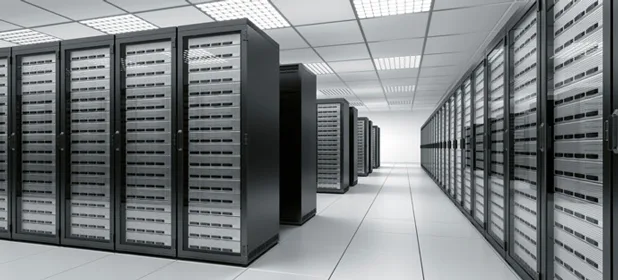The concept of housing, increasingly used by professionals, refers to the granting a user a leased physical space where they insert the server that they own. This physical space is usually located inside specific cabinets called racks, while the servers are generally hosted in server farms thanks to which optimal management of all infrastructural aspects, as well as related to software and hardware.
Indice
Colocation
Through colocation – another name by which housing is defined – the owner of the physical machine and the connected storage transfers them to the data centre, i.e. the infrastructure lease service. Housing is particularly chosen for critical network applications that would require excessively expensive autonomous infrastructures.
The Rack
The rack is a standard installation system for hardware components, such as servers, consisting of a modular shelf structure 1.75 inches high (just over 44 millimetres) and 19 inches wide (just over 48 centimetres) for each unit that hosts. The number of units and the length of a rack are variable: in most cases, the standard dimensions are 12, 25 and 42 units, while the length exceeds 60 centimetres. The 42-unit racks can be divided into three shelves, each consisting of 14 units, all with separate access.
The advantages of Server Housing
The advantages
offered by racks are practical, in that they contain servers, routers or switches in an orderly manner, guaranteeing simplified access and maximum flexibility. For example, if a component needs to be updated or replaced as a result of a breakdown, maintenance could be completed without difficulty and, above all, in total safety. The servers rest on specific sliding metal sleds so that each component can be extracted with ease. They are built mostly in rack-type houses: the smallest ones take up one or at most two units, while it can hold up to ten units for blade servers.
The internal datacentre
Many companies take advantage of a data centre within the company itself: in this way it is possible to act quickly in case of need, being able to have all the data in real-time and having the certainty that same data is locked in the corporate network, without the risks that could derive from software threats or other types of intrusions. This does not mean that a choice of this type may prove challenging for a company, as it expects to bear considerable costs.
Data centre allocation
The allocation of a data centre requires the costs of updating the hardware, software and servers of the data centre, but also the purchase of the same hardware and in general of all the resources necessary to manage the data, without forgetting the need for rooms and physical areas to be allocated for this purpose. Precisely for this reason, we choose to resort to the housing solution, with an outsourcing of the data centre that can concern both a single server and a far more complex system. There are no more out-of-pocket maintenance costs, nor do you have to fear any issues that have to do with power or connectivity.







